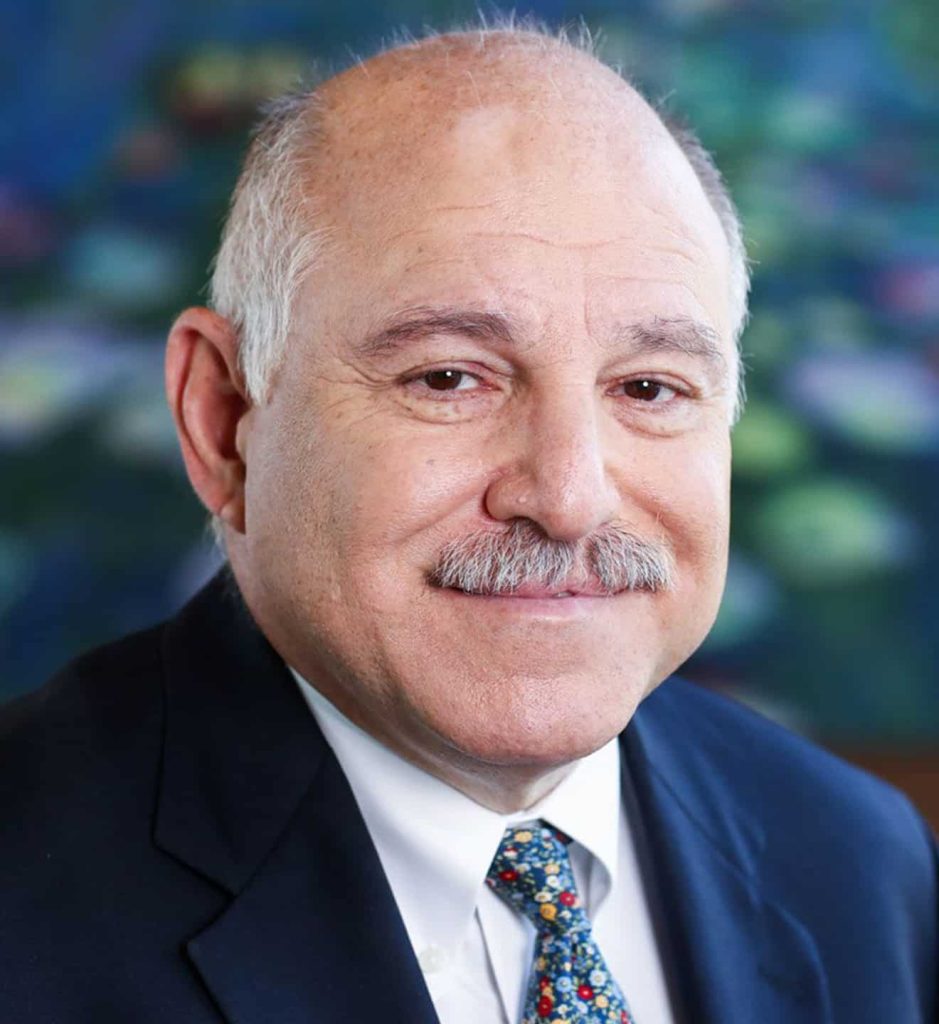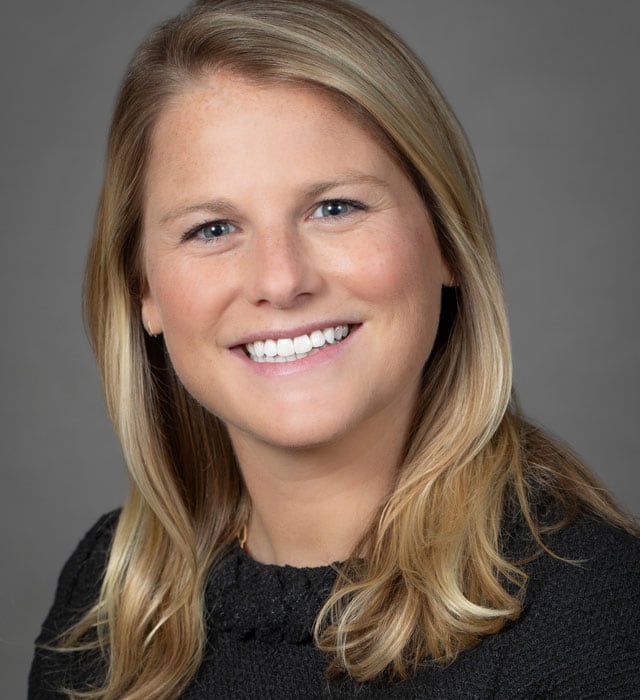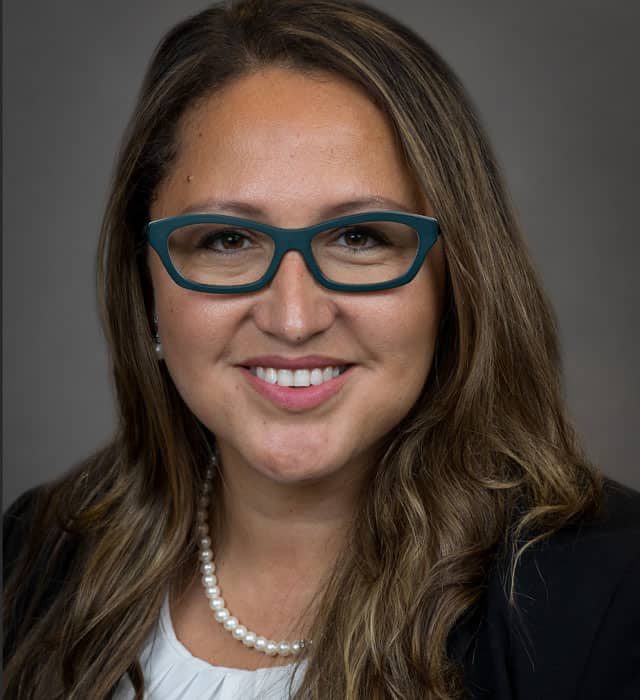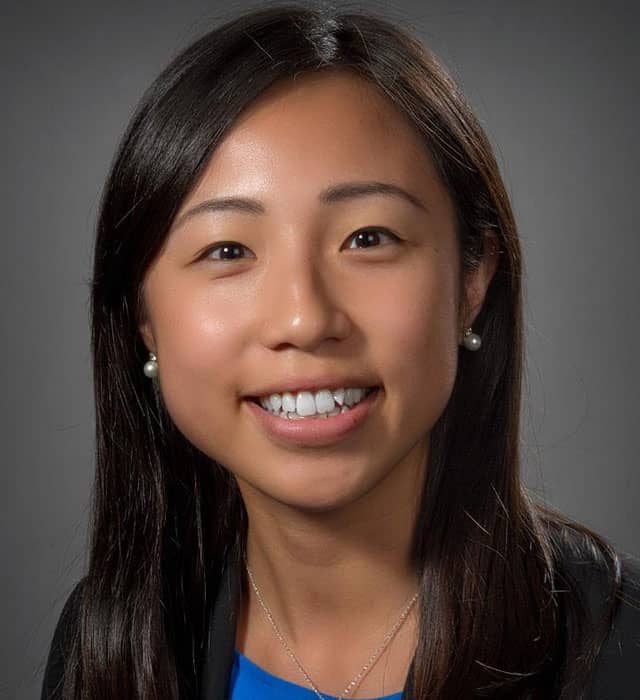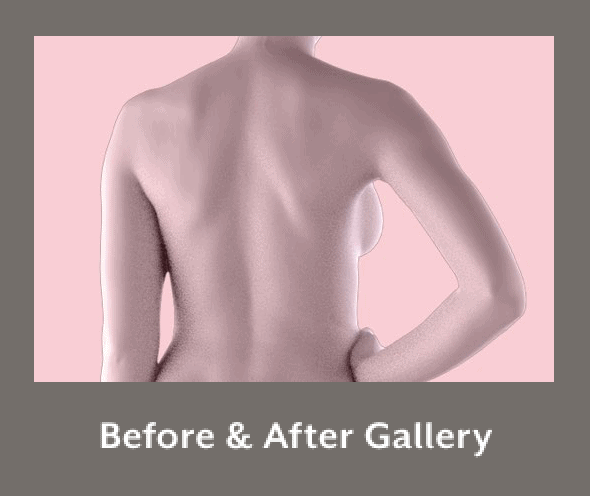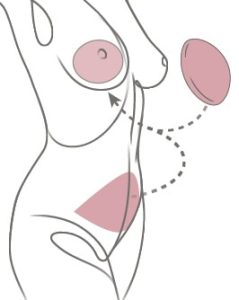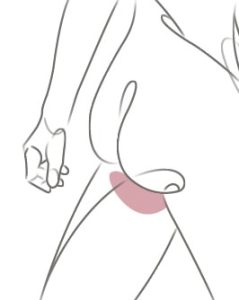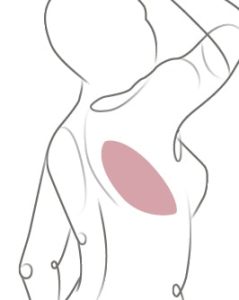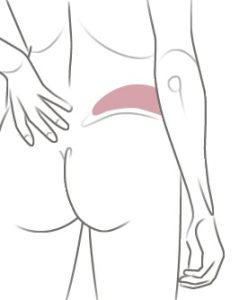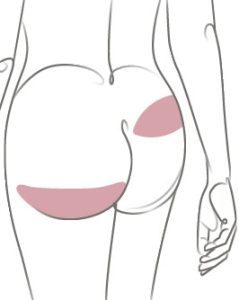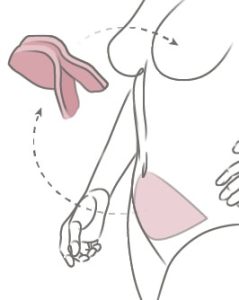About Breast Reconstruction » Natural Tissue (Flap) Reconstruction » Abdominal Tissue Site
Abdominal Tissue Site (Flap Reconstruction)

On this page

On this page
The abdomen is an excellent source of soft fat and skin for breast reconstruction. Because abdominal tissue closely resembles breast tissue, the reconstructed breast looks and feels warm and natural.
Typically, the abdomen offers the most fat and skin volume for recreating the form of the breast of any other area of the body. Most women appreciate the flatter and firm belly that results from removing abdominal tissue and enjoy the “tummy-tuck” effect. Abdominal tissue can be used for the reconstruction of one or both breasts, depending on the amount of tissue available.
Abdominal Anatomy
To understand how flap reconstructions are performed and the differences between them, it’s helpful to know a bit about your abdomen’s anatomy.
Underlying the skin of the abdomen is a layer of fat. Under that fat is a layer of tough tissue called the fascia, which helps to hold in the intestines and keep them from bulging out. Beneath the fascia lies a layer of muscle called the rectus abdominis—the “six-pack” muscle. Two blood vessels supply the rectus abdominis with blood: the deep superior epigastric artery (DSEA) and the deep inferior epigastric artery (DIEA). The DIEA has smaller vessels, called perforators, that travel through the muscle layer to supply the fatty layer and skin above with blood. The superficial inferior epigastric artery (SIEA), which runs in the fat just below the skin, also helps to supply the fat and skin.
Flaps made from abdominal tissue may include tissue from all, or just some, of these layers.
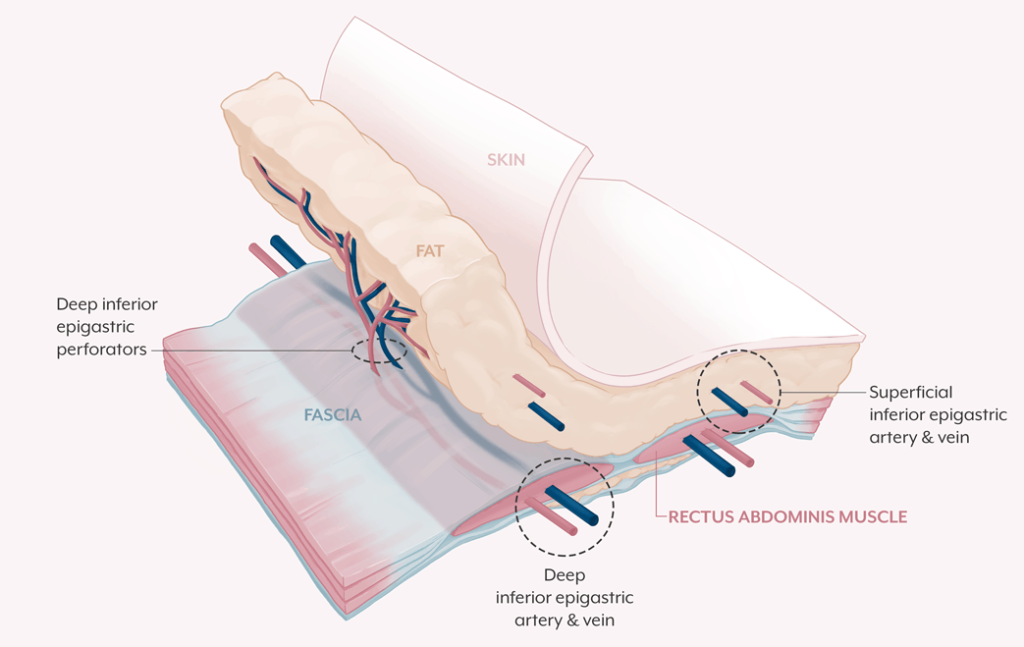
Types of Abdominal Flap Procedures
There are several different types of breast reconstruction procedures that use abdominal tissue: DIEP, SIEA, TRAM, and stacked flap.
DIEP (deep inferior epigastric perforator) flap is named after the perforator vessels that travel through the rectus abdominis to supply the fat and skin that lie above. Only fat and tissue—not muscle—are taken from the abdomen for DIEP. A limited incision is made through the muscle layer to access the perforator vessels, which are then connected to blood vessels in the breast area to nourish the new breast.
SIEA (superficial inferior epigastric artery) flap is similar to the DIEP flap, but it uses vessels that lie close to the surface, leaving the abdominal muscles undisturbed. However, not all women qualify for a SIEA flap—the vessels may be too small or damaged from prior surgery, or they may not exist.
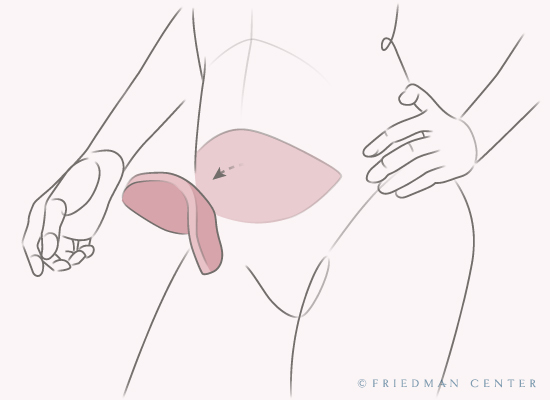
TRAM (transverse rectus abdominis) flap is named for a muscle in your lower abdomen that lies between your waist and your pubic bone. Like DIEP and SIEA, TRAM removes a portion of skin and fat from your abdomen, but it also takes part of the rectus abdominis muscle. Newer, “muscle-sparing” TRAM techniques use only a portion of the muscle. There are two types of TRAM: free and pedicled. In a free flap, the donor abdominal tissue, including the blood vessels, is completely separated from the abdomen and reattached to the chest to create the new breast. In the pedicled flap, the abdominal tissue remains partially attached to its original site and is tunneled up beneath the skin to the breast.
A TRAM procedure is generally only done when a patient is not a candidate for a DIEP or SIEA procedure. Because muscle is removed, you never get back full abdominal strength after any type of TRAM procedure. The amount of strength you lose depends on the amount of muscle removed. Recovery from a TRAM flap procedure takes longer and is more painful than from a DIEP flap procedure.
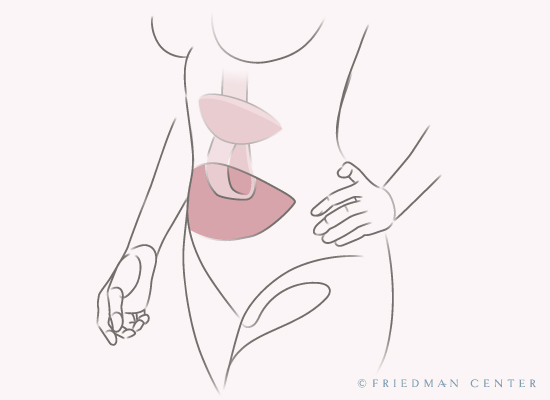
Stacked flap may be used for women who don’t have sufficient abdominal fat to create a new breast. This procedure may also be used for women who have had multiple abdominal surgeries that altered the blood supply. The stacked flap uses two flaps to reconstruct one breast, typically when there is not enough tissue from any one donor site. It can also involve two flaps from the abdomen or from other areas of the body, such as the buttocks or thighs, to create two breasts.
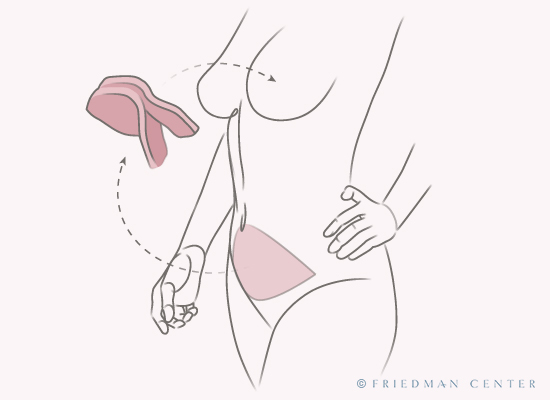
Things to Consider
Here are some things to think about and to discuss with your surgeon:
If you’ve had prior abdominal surgery, you may not be a candidate for breast reconstruction using abdominal tissue.
Abdominal tissue can be used for both unilateral (one breast) or bilateral (both breasts) reconstruction, depending on the amount of tissue available.
Tissue can be taken from the abdomen for breast reconstruction only once. If you need reconstruction of the other breast at a later time, you’ll need to use tissue from an alternate donor site or have implant reconstruction. If you’re considering a single-side mastectomy with breast reconstruction, you might want to consider having the other breast prophylactically removed and reconstructed as well.
The scar that is left on the abdomen will be higher than with a traditional tummy tuck.
No heavy lifting may be done for 6-12 weeks after surgery.
TRAM procedures, which remove muscle from the abdomen, will cause some loss of core strength and increase the risk of bulge and hernia.
The Friedman Center is now performing robotic surgery for DIEP flap procedures
The Best Flap Procedure for You
Unless there are contraindications (such as lack of body fat or previous abdominal surgery), for most patients the DIEP and SIEA flaps are the best forms of breast reconstruction. The DIEP flap disturbs abdominal musculature only slightly (if at all), and the SIEA leaves it completely intact. DIEP and SIEA patients recover more quickly than TRAM flap patients, and there is considerably less pain after the surgery.
For most patients, the DIEP flap is the best procedure because the deep anatomy is much more consistent than the SIEA anatomy, making this the most common technique for this donor site.
Contraindications and Alternatives
If you’ve had prior abdominal surgery, you may not be a candidate for a DIEP flap. Your doctor can evaluate this during your consultation. If your abdomen can’t be used as the donor site, alternative sites, such as your thighs, buttocks or back, may be considered. Or, an implant may be used instead of fat.
Women who have little abdominal fat may be candidates for a stacked flap procedure, a hybrid flap-implant procedure, or a flap from another donor site.




